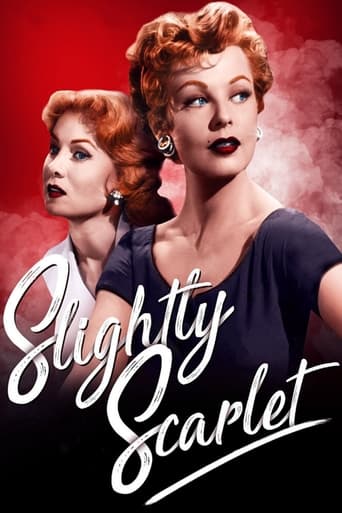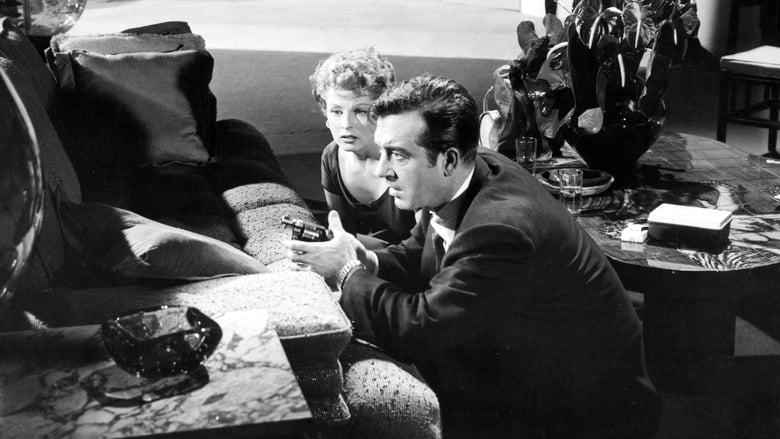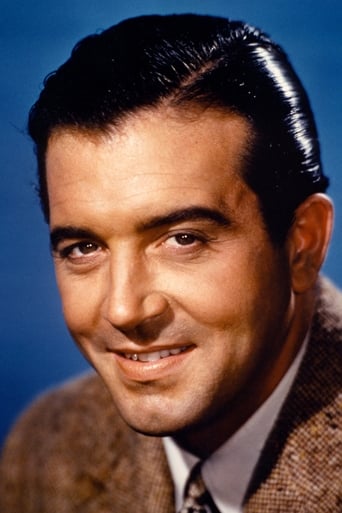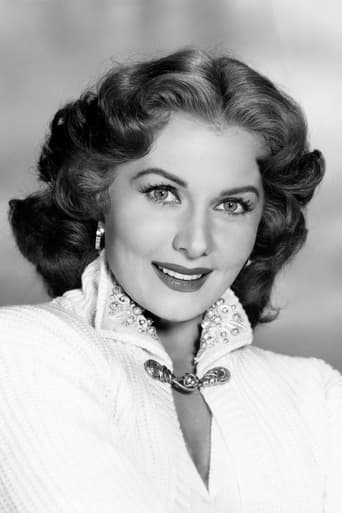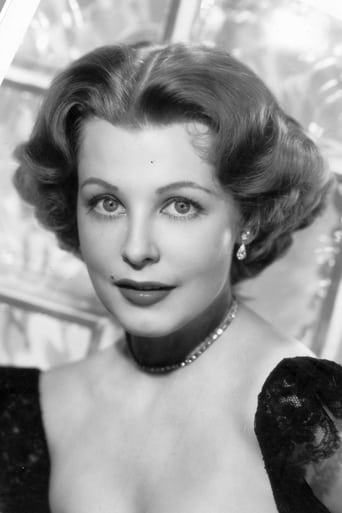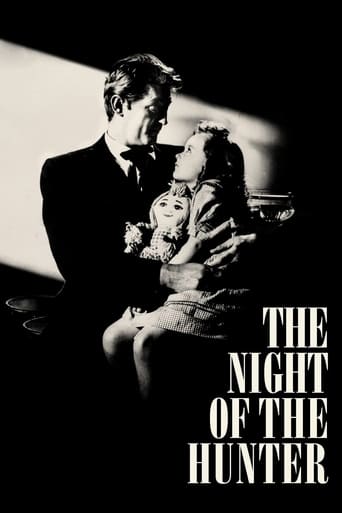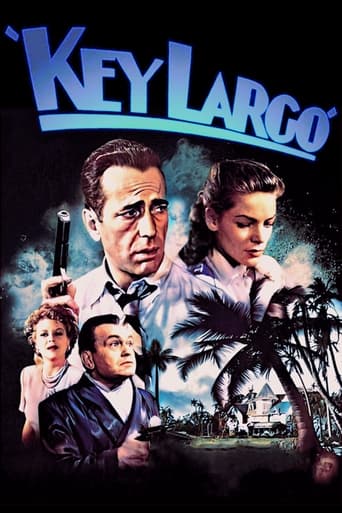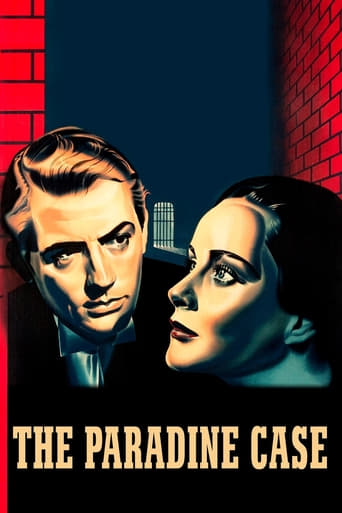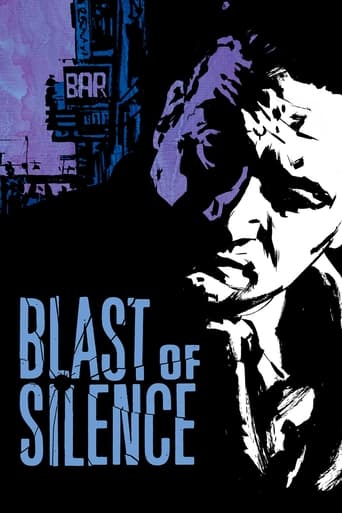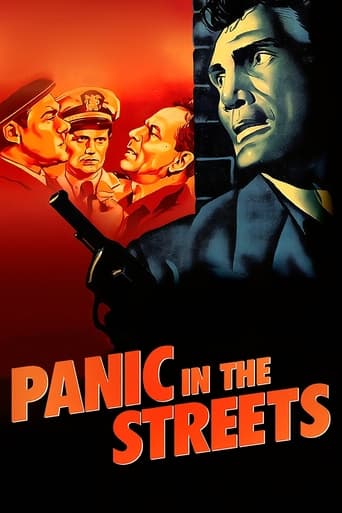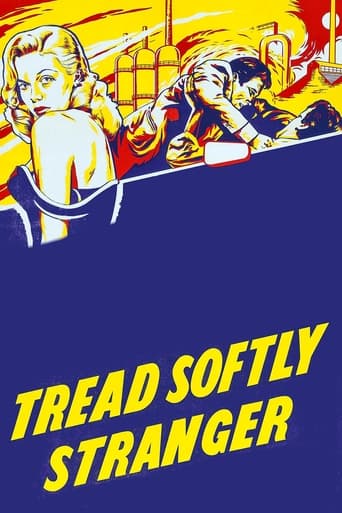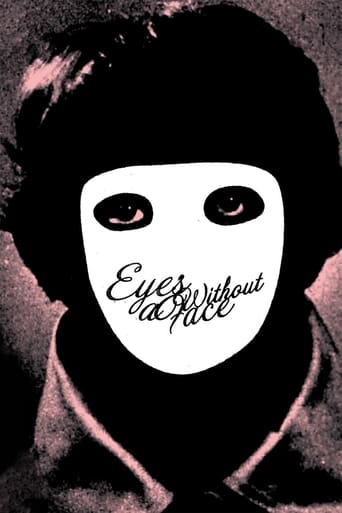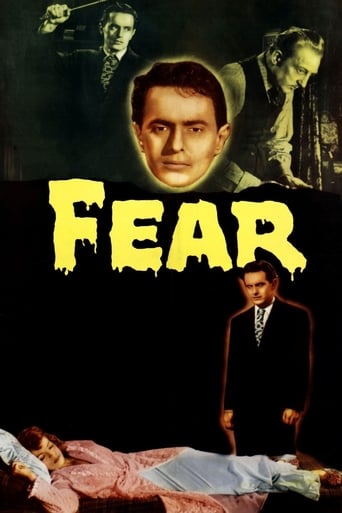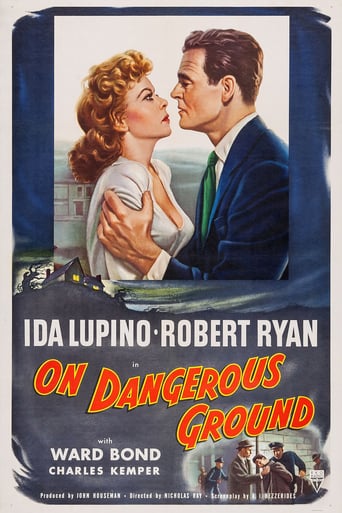Slightly Scarlet (1956)
Kleptomaniac Dorothy Lyons is paroled from prison into the custody of her sister June, secretary to "reform" politician Frank Jansen. Ben Grace, associate of crime boss Sol "Solly" Caspar, sees this as a way to smear Jansen's campaign. Seductive Dorothy will do anything to get what she wants, which includes having a good time with Ben-- whom June is now in love with.
Watch Trailer
Cast


Similar titles
Reviews
I like the storyline of this show,it attract me so much
Simple and well acted, it has tension enough to knot the stomach.
It’s not bad or unwatchable but despite the amplitude of the spectacle, the end result is underwhelming.
There are moments in this movie where the great movie it could've been peek out... They're fleeting, here, but they're worth savoring, and they happen often enough to make it worth your while.
A great movie for those of you who still believe the "Mad Men" series was an exaggeration of the times (it wasn't) or if you have a fetish for redheads; otherwise, this 1956 detective pic is spoiled by 1950's sensibilities with it's clean, vibrant production and very white cast. It skirts around grittier issues but the story is more soap opera then film noir. The lead is a fixer of sorts (think 'Ray Donovan' but in a Botany 500 suit) and driven by his own selfish interests. Is he just a crook or an anti-hero worth rooting for? Two cleavage driven sisters (one good, one bad) help you decide. It's tricky and the acting is strong enough that you might want to sit through the whole thing to find out. But then again... The great Helen Hayes plays a house maid.
With redheads Rhonda Fleming and Arlene Dahl starring in this, you just know "Slightly Scarlet" had to be in color. The male star is John Payne, the year is 1956, the director is Allen Dwan, and the great cinematographer John Alton.Based on the novel Love's Lovely Counterfeit by James M. Cain, Fleming plays June, secretary to a mayoral candidate, Frank Jansen (Kent Taylor). We first see her picking up her sister Dorothy (Dahl) from prison - third time. Dorothy is apparently a kleptomaniac, though she also seems to be a nymphomaniac.Ben Grace (Payne), who is associated with a city crime boss, has photographed June picking up her sister at the prison, hoping to sully the honest Jansen's campaign. But he falls for June and then tries to help Jansen defeat his opponent. But Ben is still playing both ends, and June and Dorothy are soon caught in the middle.There are a couple of problems romantically, too -- one is, Jansen wants to marry June, who is in love with Ben; and Dorothy wants Ben too, however she can get him.John Payne obviously saw himself as a tough guy. He couldn't get away from those Fox musicals fast enough. Here, about 10 years after his Fox tenure, he looks the worse for wear but does a good job. He loved this kind of role.The gorgeous Fleming wears outfits that show off her assets and the film's vibrant colors. She does well. Less successful for me was Arlene Dahl, whose acting left something to be desired. Her character was somewhat annoying, and I think she was going for a kittenish quality that she missed. One scene made me chuckle. She goes to put on a bathing suit and returns with a completely different hairstyle. Gotta love those glamor days when you looked good no matter what.Entertaining noir, with Alton's magnificent cinematography an added plus.
I rather like the director, Allan Dwan, because he was a no-nonsense guy who was in the movie business from the beginning. Nothing pretentious or arty. Yet this movie sucks. It should open with some guy dressed in rags, tinkling a bell, chanting "B Feature." There's no sign of imagination and the story -- from James M. Cain -- is pedestrian. But then everything is dull, from the score to the photography.Arlene Dahl is the bad girl. We know it at once because the camera cuts from a sign ("Woman's Prison") to Dahl being picked up at the gate by her equally red-haired and devoted sister, Rhonda Fleming. Arlene Dahl and Rhonda Fleming. Two aces.Dahl, without being the least angry, blames Fleming for not having enough money to get her out of jail for theft. Fleming is happy and solicitous. When they reach Fleming's home -- she's a secretary to a mayoral candidate in Bay City -- Dahl heads at once for the booze while the morally upright Fleming refuses a drink in the most polite manner.You ought to see Fleming's house. She's a secretary but she lives in a grand estate that looks like it might have been an apartment set aside for Frank Sinatra in Las Vegas. Every set looks just as opulent and tasteless. It doesn't matter whether it's a rich guy's house or somebody's office. It's as if they changed the shape of the room but just shifted the accouterments from one set to the next. Except for a few minutes the whole movie is shot on a sound stage.Dwan shows no interest in the production. It's all functional and lapses into cliché at every opportunity. If Dahl wants to admire herself in the mirror, she looks into the mirror at an angle, so that she's not really seeing herself, only the camera lens.There's a good guy and a bad guy. One of them (Ted de Corsia) is named Solly Kaspar. The other (Payne) is named Ben Grace. Guess which is the good guy and which is the bad guy.The plot has the ambitious Payne taking over the politically influential gang of de Corsia. There is a conflict. The two red heads are dispensable, and both of them have about as much talent as you'd find in a community college play somewhere in Cranford, New Jersey. It's not just the actresses though; it's the roles as written. Fleming has unbelievable devotion to her unbalanced sister. Yes, the heart has its reasons that the mind will never know, but the reasons are stupid.Watch it if you like, but it's not as carefully done as, say, any early episode of "Law & Order."
Anyone remotely interested in cinematography and art direction should see this. John Alton, chiefly famous for his work in black and white, here switches to livid colour and achieves some of the most daring and moody effects ever known in colour films. This was a decade before 'flashing' the film became popular (a technique developed by Freddie Young, who told me all about it at the time he began the trend, with Lumet's 'Deadly Affair'). Everything here is so vivid, and the games played with colour in choice of sofas, walls, carpets, not to mention hair, are so intense, that the film is really chiefly of interest for all of that. Alton had to work only with variations in lighting, not with film processing possibilities. What he did is incredibly audacious, worth watching over and over just to study it. He has whole figures in shadow, and faces often are eclipsed by darkness in a bright room. It is really an incredibly dazzling display of virtuosity and genius. The two lead gals have matching hair, which plays well on the sets. Rhonda Fleming was a notorious strawberry blonde, and although I seem to recall that Arlene Dahl was really a normal blonde and presumably had her hair died to match Fleming's for this film, here they are very like the sisters they play indeed, with matching peachy hair and bright blue eyes. It is all a symphony of light and dark and colour combinations, like a modernist painting. The story is tepid, diluted from a James Cain novel about city corruption and crime. Arlene Dahl is not very convincing as a kleptomaniac siren who is supposed to be deeply psychologically disturbed (that part only comes out at the end, though we know about the thefts from the beginning, as the film begins with her coming out of prison). Rhonda Fleming swings her hefty bust around with confidence, and glares with her blue eyes at people as she challenges them, which with her fiery nature she does a lot. Into this mix comes a very seedy character played by John Payne, who by this time was really getting a little too old for such roles, nice fellow though he was. However, a sufficiently noirish tale ensues which is worth watching, though it is not a proper film noir, but merely has certain elements of that left, as the mid-1950s were asserting themselves, and people were getting more interested in Debbie Reynolds and Doris Day, and the War was a fading memory, and even the Korean War was passé by this time. Yes, things were changing, people were getting cheerier and more bourgeois by the minute, and gloom was no longer so popular, or must be relegated to horror films instead. Time to lighten up! So this is an interesting historical curiosity, a lingering shadow cast over the smiling face of a complacent Middle America which was just settling down to a nice long afternoon nap which would last until the sixties.

